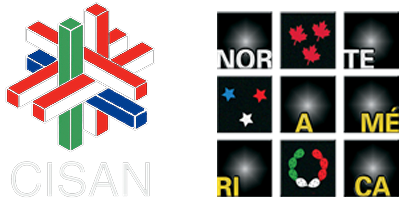Abstract
One of the highest binational population and remittance exchanges in the world occurs between Mexico and the US. Building on social capital theory, this study investigated the impact of remittance receipt on the migration intentions of Mexican adolescents living along the border (N = 984). Hierarchical regressions revealed the receipt of remittances predicted self-reported (1) desire to live in and (2) intentions to move to the US after graduation. Having a parent in the US was related to intentions to migrate, but did not moderate the relationship between remittances and migration intentions. Implications for policy and future research are made.
References
ADAMS, RICHARD. H., and JOHN PAGE
“Do International Migration and Remittances Reduce Poverty in Developing Countries?” World Development, vol. 33, no. 10, pp. 1645-1669, http://doi:10.1016/j.worlddev.2005.05.004
AMUEDO-DORANTES, CATALINA, CYNTHIA BANSAK, and SUSAN POZO
“On Remitting Patterns of Immigrants: Evidence from Mexican Survey Data,” Economic Review, vol. 90, no. 1, pp. 37-58.
BECERRA, DAVID, DAVID ANDROFF, CECILIA AYÓN, and JASON CASTILLO
“Fear vs. Facts: Examining the Economic Impact of Undocumented Immigrants in the US,” Journal of Sociology and Sociology Welfare, vol. 39, no. 4, December, pp. 111-134.
BECERRA, DAVID, MARIA GURROLA, CECILIA AYÓN, DAVID ANDROFF, JUDY KRYSIK, KAREN GERDES, LORAINE MOYA, and ELIZABETH SEGAL
“Poverty and Other Factors Affecting Migration Intentions Among Adolescents in Mexico,” Journal of Poverty, vol. 14, no. 1, pp. 1-16, http://dx.doi.org/10.1080/10875540903272801.
BORJAS, GEORGE J.
Mexican Immigration to the United States, Chicago, University of Chicago Press.
CASTAÑEDA, ERNESTO, and LESLEY BUCK
“Remittances, Transnational Parenting, and the Children Left Behind: Economic and Psychological Implications,” Latin Americanist, vol 55, no. 4, December, pp. 85-110, http://dx.doi.org/10.1111/j.1557-203X.2011.01136.x.
CHAMI, RALPH, CONNEL FULLENKAMP, and SAMIR JAHJAH
Are Immigrant Remittance Flows a Source of Capital for Development? International Monetary Fund (IMF), Working Paper, pp. 55-81.
COHEN, JACOB, and PATRICIA COHEN
Applied Multiple Regression/correlation Analysis for the Behavioral Sciences, 2nd ed. Hillsdale, London, Lawrence Erlbaum Associates Publishers.
COLEMAN, JAMES S.
Foundations of Social Theory, Cambridge, Harvard University Press.
CORONADO, ROBERTO, and JESUS CANAS
“Spotlight: Remittances to Mexico: Cross-border Money Flows Slowed by US Slump,” Southwest Economy, Spotlight: Remittances to Mexico, http://www.dallasfed.org/assets/documents/research/swe/2010/swe1001d.pdf
DE HAAS, HEIN
“International Migration, Remittances, and Development: Myths and Facts,” Third World Quarterly, vol. 26, no. 8, pp. 1269-1284, http://dx.doi.org/10.1080/01436590500336757.
DIMOVA, RALITZA, and FRANCOA-CHARLES WOLFF
Remittances and Chain Migration: Longitudinal Evidence from Bosnia and Herzegovina, Discussion paper, no. 4083, Institute for the Study of Labor, http://ftp.iza.org/dp4083.pdf.
DUSTMANN, CHRISTIAN
“Children and Return Migration,” Journal of Population Economics, no. 16, May, pp. 815-830, http://dx.doi.org/10.1007/s00148-003-0161-2.
FRISBIE, P.
“Illegal Migration from Mexico to the United States: A Longitudinal Analysis,” International Migration Review, vol. 9, pp. 3-13, http://dx.doi.org/10.2307/3002526.
FUSSEL, ELIZABETH
“Sources of Mexico’s Migration Stream: Rural, Urban, and Border Migrants to the United States,” Social Forces, vol. 82, no. 3, March, pp. 937-967, http://dx.doi.org/10.1353/sof.2004.0039.
HANSON, GORDON H.
“Globalization, Labor Income, and Poverty in Mexico,” in A. Harrison ed., Globalization and Poverty, Chicago, University of Chicago Press, pp. 417-456.
INEE (INSTITUTO NACIONAL PARA LA EVALUACION DE LA EDUCACION)
“¿En qué medida el sistema educativo cubre la necesidad social de educación?” http://www.inee.edu.mx/bie_wr/mapa_indica/2013/PanoramaEducativoDeMexico/CS/CS04/2013_CS04__a.pdf
JENKINS, J. CRAIG
“Push/pull in Recent Mexican Migration to the US,” International Migration Review, vol. 11, no. 2, Summer, pp. 78-189, http://dx.doi.org/10.2307/2545157.
KANAIAUPUNI, SHAWN M.
“Reframing the Migration Question: An Analysis of Men, Women, and Gender in Mexico,” Social Forces, vol. 78, no. 4, June, pp. 1311-1347, http://dx.doi.org/10.1093/sf/78.4.1311
KOCHHAR, RAKESH
“Survey of Mexican Migrants, Part Three,” Pew Research Center, December 6, http://www.pewhispanic.org/2005/12/06/survey-of-mexican-migrants-part-three/.
LEEVES, GARETH
“Migration Plans and Received Remittances: Evidence from Fiji and Tonga,” International Migration Review, vol. 43, no. 1, Spring, pp. 160-177, http://dx.doi.org/10.1111/j.0197-9183.2008.01151.x
LINDSTROM, DAVID P.
“Economic Opportunity in Mexico and Return Migration from the United States,” Demography vol. 33, no. 3, August, pp. 357-374, http://dx.doi.org/10.2307/2061767.
MARTIN, PHILIP
“NAFTA and Mexico-U.S. Migration: What Lessons, What Next?” CESifo Forum vol. 11, no. 4, pp. 38-44.
MASSEY, DOUGLAS S.
“Social Structure, Household Strategies, and the Cumulative Causation of Migration,” Population Index, vol. 56, no. 1, Spring, pp. 3-26, http://dx.doi.org/10.2307/3644186.
MASSEY, DOUGLAS S., and LAWRENCE BASEM
“Determinants of Savings, Remittances, and Spending Patterns among U.S. Migrants in Four Mexican Communities,” Sociological Inquiry, vol. 62, no. 2, April, pp. 185-207, http://dx.doi.org/10.1111/j.1475-682X.1992.tb00193.x
MASSEY, DOUGLAS S., JORGE DURAND, and NOLAN J. MALONE
Beyond Smoke and Mirrors: Mexican Immigration in an Era of Economic Integration, New York, Russell Sage Foundation.
MASSEY, DOUGLAS S., and FELIPE GARCIA-ESPAÑA
“The Social Process of International Migration,” Science, vol. 237, no. 4816, August, pp. 733-738, http://dx.doi.org/10.1126/science.237.4816.733.
MASSEY, D. S., LUIN GOLDRING, and JORGE DURAND
“Continuities in Transnational Migration: An Analysis of Nineteen Mexican Communities,” American Journal of Sociology, vol. 99, no. 6, May, pp. 1492-1533.
MISHRA, PRACHI
“Emigration and Wages in Source Countries: Evidence from Mexico,” Journal of Development Eonomics vol. 82, no. 1, January, pp. 180-199.
MOONEY, MARGARITA
“Migrants’ Social Capital and Investing Remittances in Mexico,” in J. Durand and D. S. Massey, eds., Crossing the Border: Research from the Mexican Migration Project, New York, Russell Sage Foundation, pp. 45-62.
OECD (ORGANISATION FOR ECONOMIC CO-OPERATION AND DEVELOPMENT)
“How´s Life?” http://www.oecdbetterlifeindex.org/countries/mexico/
ONG, BILL
Ethical Borders: NAFTA, Globalization, and Mexican Migration, Philadelphia, Temple University Press.
ORRENIUS, PIA M., and MICHAEL NICHOLSON
“Immigrants in the US Economy: A Host Country Perspective,” Journal of Business Strategies, vol. 26, no. 1, Spring, pp. 35-53.
ORTMEYER, DAVID L. , and MICHAEL A. QUINN
“Coyotes, Migration Duration, and Remittances,” The Journal of Developing Areas, vol. 46, no. 2, September, pp. 185-203, http://dx.doi.org/10.1353/jda.2012.0038
PALLONI, ALBERTO, DOUGLAS S. MASSEY, MIGUEL CEBALLOS, KRISTIN ESPINOSA, and MICHAEL SPITTEL
“Social Capital and International Migration: A Test Using Information on Family Networks,” American Journal of Sociology, vol. 106, no. 5, March, pp. 1262-1298, http://dx.doi.org/10.1086/320817
PISANI, MICHAEL J., and DAVID W. YOSKOWITZ
“The Maid Trade: Cross-border Work in South Texas,” Social Science Quarterly, vol. 83, no. 2, December, pp. 568-579, http://dx.doi.org/10.1111/1540-6237.00101.
REICHERT, JOSHUA S.
“The Migrant Syndrome: Seasonal U.S. Wage Labor and Rural Development in Central Mexico,” Human Organization, vol. 40, no. 1, pp. 56-66, http://dx.doi.org/10.17730/humo.40.1.c6148p5743512768.
ROSENBLUM, MARK R., WILLIAM A. KANDEL, CLARE R. SEELKE, and RUTH E. WASEM
“Mexican Migration to the US: Policy and Trends,” Congressional Research Service, June 7, https://www.fas.org/sgp/crs/row/R42560.pdf.
SANA, MARIANO, and DOUGLAS S. MASSEY
“Household Composition, Family Migration, and Community Context: Migrant Remittances in Four Countries,” Social Science Quarterly, vol. 86, no. 2, June, pp. 509-528, http://dx.doi.org/10.1111/j.0038-4941.2005.00315.x
SCHMITTER HEISLER, B.
“The Bracero Program and Mexican Migration to the US,” Journal of the West, vol. 47, pp. 65-72.
STARK, ODED
The Migration of Labor, Cambridge, Basil Blackwell.
STARK, ODED, J. EDWARD TAYLOR, and SHLOMO YITZHAKI
“Remittances and Inequality,” The Economic Journal vol. 96, no. 383, September, pp. 722-740, http://dx.doi.org/10.2307/2232987.
“Migration, Remittances, and Inequality: A Sensitivity Analysis Using the Extended Gini-index,” Journal of Development Economics, vol. 28, no. 3, May, pp. 309-322, http://dx.doi.org/10.1016/0304-3878(88)90002-8.
SURO, ROBERTO, SERGIO BENDIXON, B. LINDSAY LOWELL, and DULCE C. BENAVIDES
Billions in Motion: Latino Immigrants, Remittances and Banking, Pew Research Center, Washington D.C., University of Southern California, http://www.pewhispanic.org/files/reports/13.pdf
UNITED NATIONS (UN)
International Migration Report 2009: A Global Assessment, New York, Department of Economic and Social Affairs, http://www.un.org/esa/population/publications/migration/WorldMigrationReport2009.pdf.
VAN DALEN, HENDRIK P., GEORGE GROENEWOLD, and TINEKE FOKKEMA
“The Effect of Remittances on Emigration Intentions in Egypt, Morocco, and Turkey,” Population Studies, vol. 59, no. 3, pp. 375-392, http://dx.doi.org/10.1080/00324720500249448.
WILSON, TAMAR D.
“Theoretical Approaches to Mexican Wage Labor Migration,” Latin American Perspectives, vol. 20, no. 3, Summer, pp. 98-129.
WORLD BANK
“Personal Remittances, Received (Current US$),” http://data.worldbank.org/indicator/BX.TRF.PWKR.CD.DT.
“GNI per capita, Atlas Method,” http://data.worldbank.org/indicator/NY.GNP.PCAP.CD.
ZONG, JIE, and JEANNE BATALOVA
“Frequently Requested Statistics on Immigrants and Immigration in the United States,” Migration Policy Institute, April 14, http://www.migrationpolicy.org/article/frequently-requested-statistics-immigrants-and-immigration-united-states.
Authors who publish with this journal agree to the following terms:
Copyright Retention and License Grant:
Authors retain copyright of their work and grant the journal a non-exclusive right of first publication. The work is licensed under a Creative Commons Attribution-NonCommercial 4.0 International License (CC BY-NC 4.0), which permits others to share and adapt the work for non-commercial purposes, provided they give appropriate credit to the author and acknowledge the work’s initial publication in this journal.
Additional Distribution: Authors are free to enter into separate, additional contractual arrangements for the non-exclusive distribution of the journal’s published version of the work (e.g., posting to an institutional repository, publishing in a book, or other distribution), provided they acknowledge the work’s initial publication in this journal.
Pre- and Post-Publication Sharing: Authors are permitted and encouraged to share their work online (e.g., in institutional repositories, personal websites, or academic platforms) before, during, or after the submission process, as this can foster productive exchanges and increase the visibility and citation of the published work, subject to the terms of the CC BY-NC 4.0 license.



